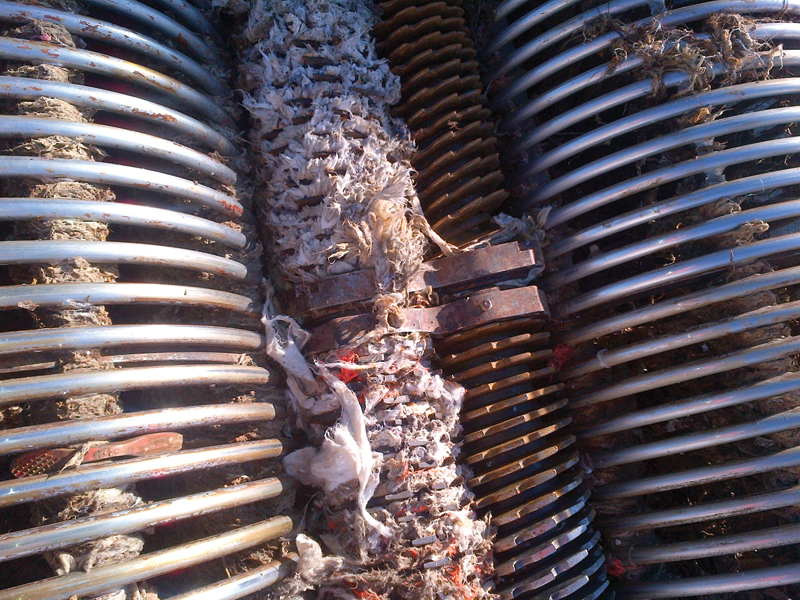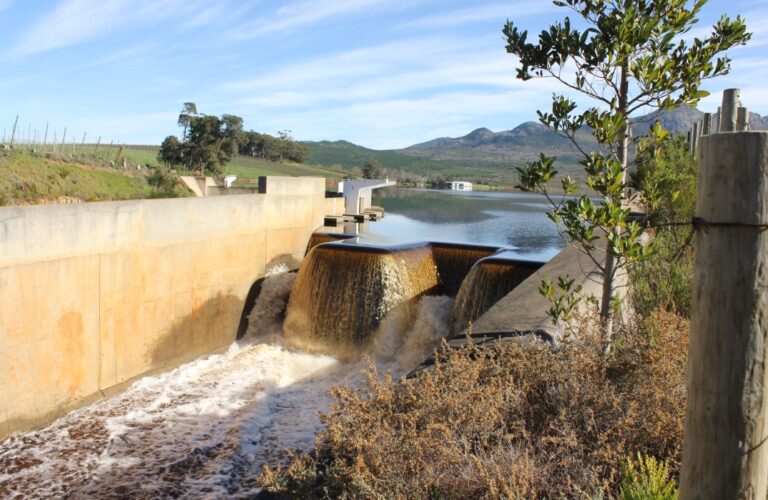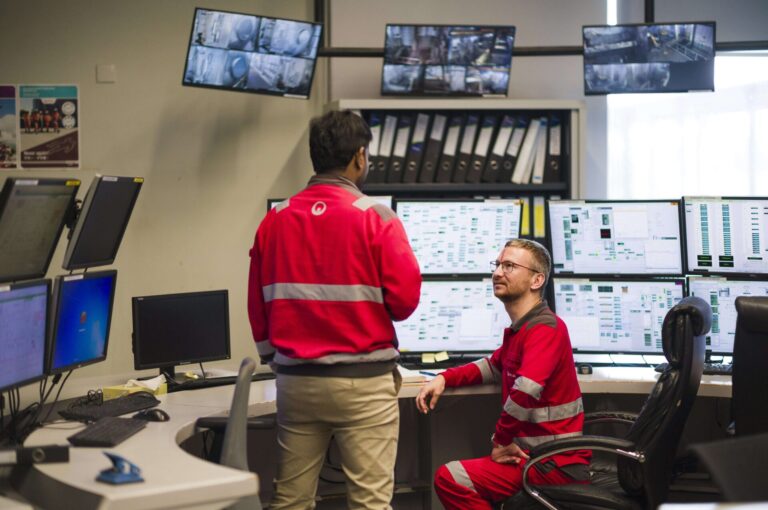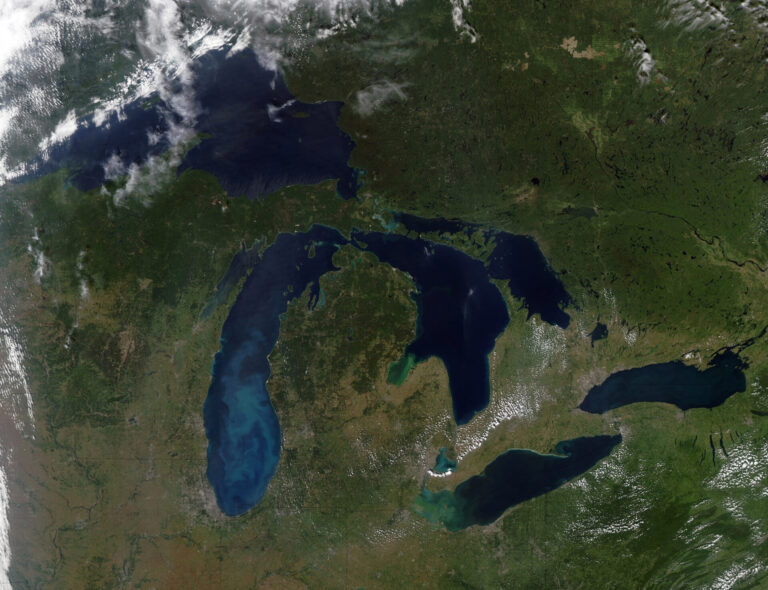If you work in a wastewater treatment facility, you know better than to flush a toilet containing anything that isn’t water, human waste, or toilet paper. Unfortunately, that’s not the case for the general public. Every day, material such as baby wipes, feminine hygiene products, condoms, dental floss, cotton swabs, diapers, hair, bandages, candy wrappers, kitty litter, syringes, rubber and plastic gloves, cleaning wipes, pantyhose, and even toothbrushes are ending up in the sewer system.
This garbage leads to blocked private drain connections, clogged sewer mains, and damage to wastewater treatment facility equipment. Those blocked sewers can also lead to basement flooding and raw sewage discharges into our streams, creeks, and rivers.
Why are toilets being treated like trash cans? There are a couple of key reasons.
 Confusing terminology. Over the past 30 years, the demand for and development of personal hygiene products has increased substantially. According to the Freedonia Group, for example, demand for disposable wipes in the United States is forecast to rise 5.1 per cent per year to $2.5 billion in 2016. Wipes for personal care, household cleaning, and industry cleaning can be made from paper, tissue, or non-woven material. Manufacturers classify some products as “flushable” without a clear definition. There are also “biodegradable,” “eco-friendly,” and “natural” wipes. No wonder people are confused.
Confusing terminology. Over the past 30 years, the demand for and development of personal hygiene products has increased substantially. According to the Freedonia Group, for example, demand for disposable wipes in the United States is forecast to rise 5.1 per cent per year to $2.5 billion in 2016. Wipes for personal care, household cleaning, and industry cleaning can be made from paper, tissue, or non-woven material. Manufacturers classify some products as “flushable” without a clear definition. There are also “biodegradable,” “eco-friendly,” and “natural” wipes. No wonder people are confused.
Garbage collection limitations. Until recent years, household garbage collection did not have limitations or bag limits for collection. Changes to solid waste collection, however, have resulted in user-pay bag fees and more recycling and composting education. But the education has stopped at the curb. Paying for bag fees has encouraged some people to turn to their toilets as disposal units.
The costs of toilets as trash cans
The costs of clogging are enough to warrant the attention of every municipality across the nation. Clearing clogs could include flushing operations at the sewer main, emergency main blockage removal, damage to flooded residences and businesses, or raw sewage overflowing into creeks and rivers. At wastewater treatment facilities, workers may have to unplug equipment and remove unwanted, non-flushable material.
Turning these activities into duties can include preparing work orders, isolating equipment, cleaning equipment, and having maintenance personnel repair equipment, replace parts, and return the equipment to service—all of which take considerable time and resources.
According to the Canadian Gazette Part 2 Volume 146 Number 15, there are 3,700 wastewater treatment systems in Canada. A recent survey of some municipalities from across Ontario estimated that $80,000 is budgeted yearly for this type of operations and maintenance. Some municipalities have reported spending up to $5,000 per incident. That means, across the country, hundreds of millions of dollars are being spent fixing problems that, with a little education, could be avoided.
There are capital costs, too. Upgrading equipment like coarse screens comes at a much larger expense—usually hundreds of thousands of dollars. If municipalities think grinders are the solution, they should think again. A grinder is expensive to install and does not remove the garbage material. Instead, it creates smaller pieces of garbage that seem to collect in the most inconceivable locations. The result is unwanted surprises and removal challenges when the masses break free or grow.
At a recent Municipal Enforcement Sewer Use Group (MESUG) meeting, members agreed to send letters to federal, provincial, and municipal officials identifying their issues and asking for assistance with the spiralling costs. Letters also went to major manufactures that label some of their products “flushable.”
The Canadian Standards Association hosted a meeting in February 2013 with major manufacturer members of the Association of the Nonwoven Fabrics Industry (INDA), officials from MESUG, and the Canadian Water and Wastewater Association. This meeting identified issues that misleading labels are causing for wastewater systems, and MESUG argued a third-party, regulated standard should be created for Canada. Though many Canadian municipalities have spent time, money, and resources developing and delivering educational programs detailing what is and what is not flushable, INDA suggested the problem is related to a lack of public education and awareness.
It’s clear there is an enormous cost to using a toilet as a garbage can, but it’s even more evident that municipalities need to work together to serve the public and protect the environment. Manufacturers also need to provide the public with products that are safe for personal use and marked with proper disposal instructions. WC
Barry Orr is the sewer compliance officer for the City of London, Ontario.











Thanks Barry for such a well written article. I want to learn more about the Canadian Standards Association as well as MESUG. The issues you see are the same as my associates and I see here in the US and reinforces our mutual frustrations with nonwoven products that are flushed and don’t disperse rapidly. Keep up the good work.
Cheers,
Nick J. Arhontes, P.E
Orange County Sanitation District
Member of WEF, NACWA, APWA, ASCE, SCAP
I really liked this article. This message needs to be relayed to every household. It is a huge environmental issue.
Thank you Barry for writing this informative article about non-flushables! When even one person uses the toilet as a garbage can it can effect everyone as a tax payer when maintenance costs come into play. The sanitary sewer systems are in place to make our lives more convenient and hygienic but maintaining these sewers is a team effort. Every member of the community can do their part by being conscious of what they flush down the toilet, which is something we all use everyday; therefore, we all have many opportunities to make the right choice!
Best Regards,
Jessica Lompart
I think this is a great article; very informative. As a tax-paying citizen I think it’s important for everyone to be aware of how throwing innappropriate things in the toilet can cost the city money, as well as affect our daily lives and the environment.
As a municipality we have had issues with foreign objects clogging up our pumps. We notified our residents in our news magazine of the affects of the objects in terms of cost.
I like this article and would like to publish this topic in our free magazine to reinforce what happens when items other than toilet tissue natural waste products enter the sewer system and the consequences of what happens.
Great article, great job for highlighting it!
Super article on a topic that should get much more attention. It’s a high cost issue but luckily has a straightforward solution. I hope that municipalities and manufacturers take up Barry’s recommendations to educate the public. I knew of the issue from my time working at a water treatment equipment manufacturer, but none of my family or friends that I have spoken to have the slightest idea that this is an issue that is costing them money (since the municipality has to recover costs through taxes).
Thank you for this super write up on our concerns with ragging in the conveyance portion of the wastewater delivery and treatment processes. The amount of ragging material is increasing as our society because more attracted to disposable lifestyles with cleaning products. Dispersibility is the key and we look forward to new patents for “flushable” wipes, with quick dispersibility “like toilet paper” to come forward. Poo, Pee and TP – the 3 things that should be flushed…not dental floss, Q-tips, feminine hygiene products, non-dispersible wipes, paper towels… no, no, no! It is confusing…if confused – please use the bin! City of Kirkland, Wastewater Manager – Bobbi Wallace
Barry- I wanted you to know that our team here in Maine found your article to be EXCELLENT. Many of us Tweeted it and shared it with our colleagues around the country. I provided hard copies of it to my fellow Executive Board members of the Maine WasteWater Control Association during our July meeting. I’m personally encouraged by the number of articles on this topic in the media lately, many with national coverage. You can see the listing here: http://www.mwwca.org/?page_id=777. This outreach has forced the manufacturer’s association to take this issue very seriously. We hope to come to an agreement between our two sides about the definition of “flushable” and a standard way to test for it and publish the testing results in a transparent way. We also soon plan to implement a “Don’t Flush Baby Wipes” pilot education campaign here in Maine, jointly with the manufacturer’s association. Your effort feeds directly into the need for such outreach. Thanks again.
Great article! Having worked for years in wastewater engineering, particularly on pumping stations, and, having recently interviewed operators for a presentation on pump station management, the trend is very clear – “ragging” in pumping stations has become a significant problem. People are flushing non-dispersable items more than ever. Public outreach is critical; so is working with manufacturers of the most common flushable items to relabel their products for proper disposal, in the garbage not down the drain. As the article mentions, bar screens are very expensive……and they are messy and can be quite smelly – not something you would want to put in a residential area. It responds to the need, but not a good solution. I am glad to see that agencies are moving to address the solution through a broader approach.
Dennis A. DeMuth, P.E.
Senior Project Manager
Jacobs Engineering Group
Bellevue, WA
I feel this is among the so much vital info for me. And i am happy studying your article.
But want to observation on some common things, The web site style is perfect,
the articles is really nice : D. Just right activity,
cheers